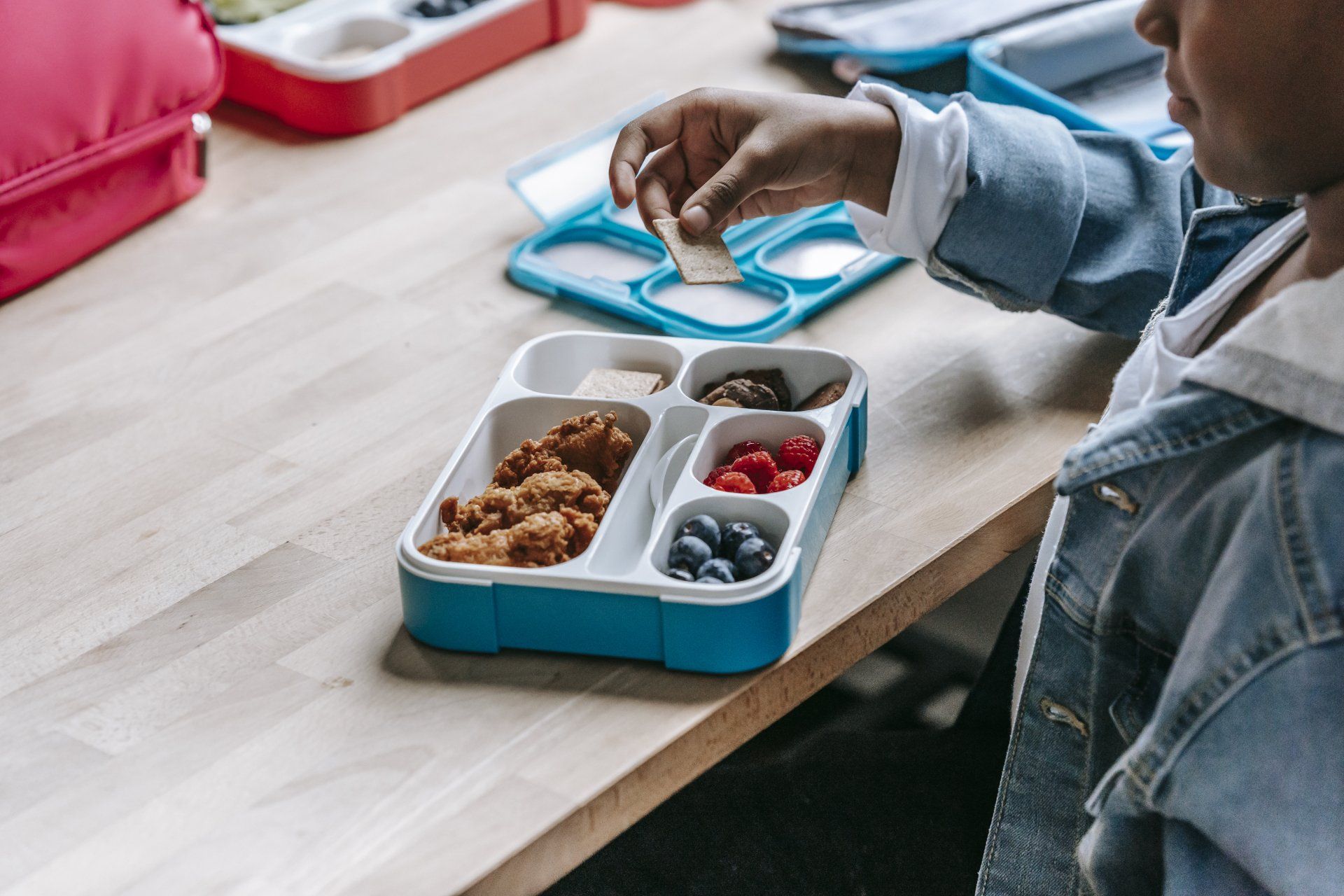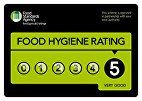Nutritious School Lunch Ideas for Children/Kids
Nutritious School Lunch Ideas for Children/Kids

As parents and educators, ensuring that young children receive nutritious meals is crucial for their growth and development. This blog provides a range of nutritious school lunch ideas tailored for children aged 0-5, aimed at helping parents and early years educators create healthy, appealing meals that kids will love. By offering practical tips and creative recipes, we hope to make the task of preparing balanced lunches easier and more enjoyable.
Why Nutrition Matters for Young Children
Proper nutrition is essential during the early years of life. It supports cognitive development, physical growth, and long-term health. Young children need a variety of nutrients to build strong bones, support brain function, and boost their immune systems. Establishing healthy eating habits early on sets the foundation for a lifetime of good health.
**Impact on Cognitive Development**
Nutrients like iron, zinc, and omega-3 fatty acids are crucial for brain development. Iron deficiency, for example, can lead to cognitive delays and affect a child’s ability to concentrate and learn. Foods rich in these nutrients, such as leafy greens, fish, and lean meats, should be included in their diet regularly.
**Supporting Physical Growth**
During early childhood, kids grow rapidly. Calcium and vitamin D are vital for bone growth, while proteins are essential for muscle development. Dairy products, fortified plant milks, and a variety of fruits and vegetables ensure children get these necessary nutrients.
**Long-term Health Benefits**
Healthy eating habits established in childhood can prevent chronic diseases later in life, such as obesity, diabetes, and heart disease. Teaching children to enjoy a variety of healthy foods can help them make better food choices as they grow older.
Planning Nutritious Lunches for Ages 0-5
Creating balanced meals for young children involves ensuring they get a mix of proteins, carbohydrates, fats, vitamins, and minerals. Here are some tips to help you plan nutritious lunches:
**Balance and Variety**
Incorporate different food groups into each meal – whole grains, lean proteins, fruits, vegetables, and dairy. This ensures that children receive a broad spectrum of nutrients necessary for their overall development. For example, a lunch could include a turkey sandwich on whole wheat bread, carrot sticks, an apple, and a serving of yogurt.
**Colour and Fun**
Young children are often attracted to colourful and visually appealing foods. Use a variety of colourful fruits and vegetables to make meals more interesting. For example, a rainbow salad with cherry tomatoes, bell peppers, carrots, and cucumbers not only looks appealing but is packed with nutrients.
**Portion Sizes**
Tailor portion sizes to suit the age and appetite of the child. Young children have smaller stomachs and may need smaller, more frequent meals. Pay attention to their hunger cues and offer portions that they can comfortably finish.
**Meal Prepping**
Plan and prepare meals in advance to save time and ensure consistency. This can involve prepping ingredients on weekends or the night before. Having a plan helps to avoid last-minute unhealthy choices and ensures that meals are balanced and nutritious.
Healthy Lunch Ideas for Young Children
1. Simple and Tasty Sandwiches
- **Turkey and Veggie Wraps**: Use whole wheat tortillas, lean turkey slices, shredded carrots, and spinach. Roll them up and cut into bite-sized pieces. This wrap is easy to eat and packed with nutrients.
- **Cheese and Avocado Sandwiches**: Whole grain bread with mashed avocado and sliced cheese. Add some tomato slices for extra flavour. Avocado provides healthy fats, while cheese offers protein and calcium.
2. Nut-Free Lunch Options
- **Hummus and Veggie Sticks**: Carrot sticks, cucumber slices, and bell pepper strips served with a small pot of hummus. This is a great way to include a variety of vegetables in a child’s diet, and hummus provides plant-based protein.
- **Sunflower Seed Butter and Jelly Sandwiches**: A safe alternative to peanut butter, paired with whole grain bread and fruit spread. Sunflower seed butter is a nutritious option rich in healthy fats and vitamins.
3. Colourful and Fun Salads
- **Fruit and Cheese Salad**: Mixed greens with strawberries, blueberries, and cubed cheese. Drizzle with a light vinaigrette. This salad is both sweet and savoury, making it appealing to young palates.
- **Rainbow Veggie Salad**: A mix of cherry tomatoes, bell peppers, cucumbers, and sweet corn, topped with a yogurt-based dressing. The variety of colours makes it visually appealing and ensures a range of nutrients.
4. Warm Lunches for Little Ones
- **Chicken and Rice Soup**: Warm, hearty soup made with chicken, brown rice, carrots, and peas. Pack in a thermos to keep it warm. This soup is comforting and nourishing, perfect for colder days.
- **Mini Meatballs and Pasta**: Whole grain pasta with mini turkey meatballs and marinara sauce. This dish is filling and provides a good balance of protein and carbohydrates.
5. Healthy Snacks to Accompany Lunch
- **Yogurt and Fruit**: Plain yogurt with a drizzle of honey and fresh fruit slices. Yogurt provides calcium and probiotics, while fruit adds natural sweetness and vitamins.
- **Cheese and Crackers**: Whole grain crackers with slices of cheese and apple. This combination offers protein, fibre, and healthy fats, making it a balanced snack.
Recipes and Meal Prep Tips for Busy Parents and Educators
1. **Turkey and Veggie Wraps**
- **Ingredients**: Whole wheat tortillas, turkey slices, shredded carrots, spinach.
- **Instructions**: Lay out tortilla, add turkey, carrots, and spinach. Roll tightly and cut into small pieces. These wraps can be prepared the night before and stored in the fridge.
2. **Hummus and Veggie Sticks**
- **Ingredients**: Carrots, cucumbers, bell peppers, hummus.
- **Instructions**: Slice vegetables into sticks. Serve with a small pot of hummus. This snack can be prepped in advance and stored in airtight containers.
3. **Fruit and Cheese Salad**
- **Ingredients**: Mixed greens, strawberries, blueberries, cubed cheese.
- **Instructions**: Combine ingredients in a bowl. Drizzle with a light vinaigrette. This salad can be assembled quickly and is a hit with young children due to its sweetness.
Tips for Dealing with Picky Eaters
Picky eating is common in young children. Here are some strategies to encourage them to try new foods:
**Involve Them in Cooking**
Let children help with meal preparation to increase their interest in food. They can wash vegetables, stir ingredients, or help assemble meals. This involvement can make them more excited to eat what they’ve helped create.
**Introduce New Foods Gradually**
Combine new foods with familiar favourites to make them less intimidating. For example, if your child loves pasta, try adding finely chopped vegetables to the sauce. Gradually increasing the amount of new foods can help children get used to different tastes and textures.
**Make Meals Fun**
Use cookie cutters to create fun shapes and make the presentation appealing. For example, cutting sandwiches into star shapes or arranging fruits into a smiley face can make meals more enjoyable. Fun presentations can entice children to try foods they might otherwise avoid.
Conclusion
Providing nutritious school lunches for young children is essential for their overall development and well-being. By incorporating the ideas and tips shared in this blog, parents and educators can ensure that their children receive balanced, delicious meals that support their growth. Encouraging healthy eating habits from an early age sets the stage for a lifetime of good health. Remember, making mealtime fun and involving children in the process can make a significant difference in their willingness to try new foods.
FAQs
Q: What are some healthy protein options for young children?
A: Lean meats, beans, tofu, and dairy products are great sources of protein for young children. These foods help in muscle development and repair.
Q: How can I make vegetables more appealing to my child?
A: Try serving vegetables with dips like hummus or yogurt, or incorporate them into dishes they already enjoy, such as pasta sauces or smoothies. Using colourful vegetables can also make them more appealing.
Q: What should I do if my child refuses to eat their lunch?
A: Stay calm and avoid pressuring them. Offer a variety of healthy foods and let them choose what to eat. Sometimes, offering smaller portions or presenting the food in a fun way can help.
GLOBAL KIDS DAY CARE LIMEHOUSE
Lascar Wharf Community Centre, Limehouse, London, E14 7FN. | Tel: 0207 001 1210 Email: limehouse@globalkidsdaycare.co.uk
GLOBAL KIDS DAY CARE MILE END
21 Burdett Road, Mile End, London, E3 4TU. | Tel: 0208 980 1706 Email: mile-end@globalkidsdaycare.co.uk
GLOBAL KIDS DAY CARE ALDGATE EAST
52 Old Castle Street, Aldgate East, London E1 7AJ. | Tel: 0203 302 7800 / Mobile: 07823 770035 | Email: aldgateeast@globalkidsdaycare.co.uk
Opening Times: 8am - 6pm

















